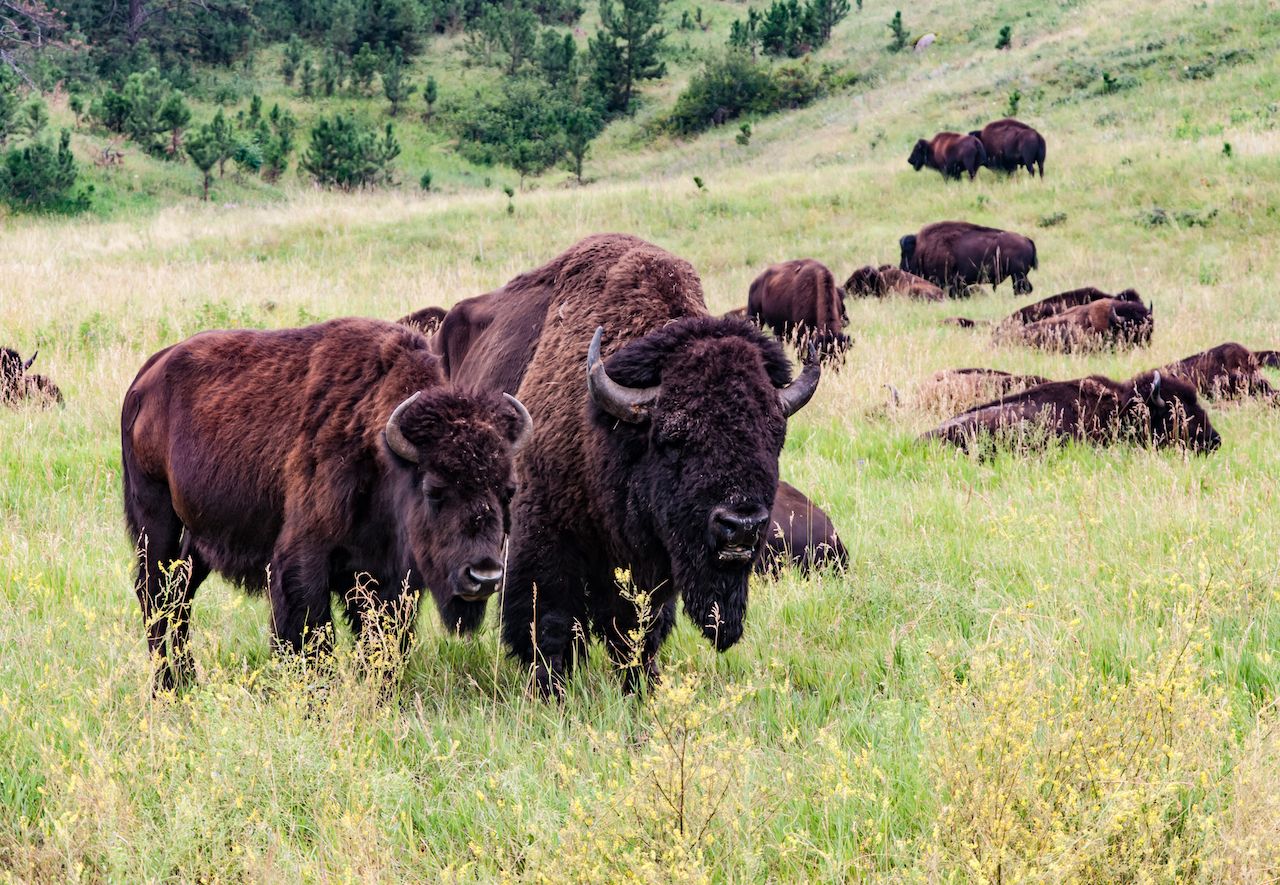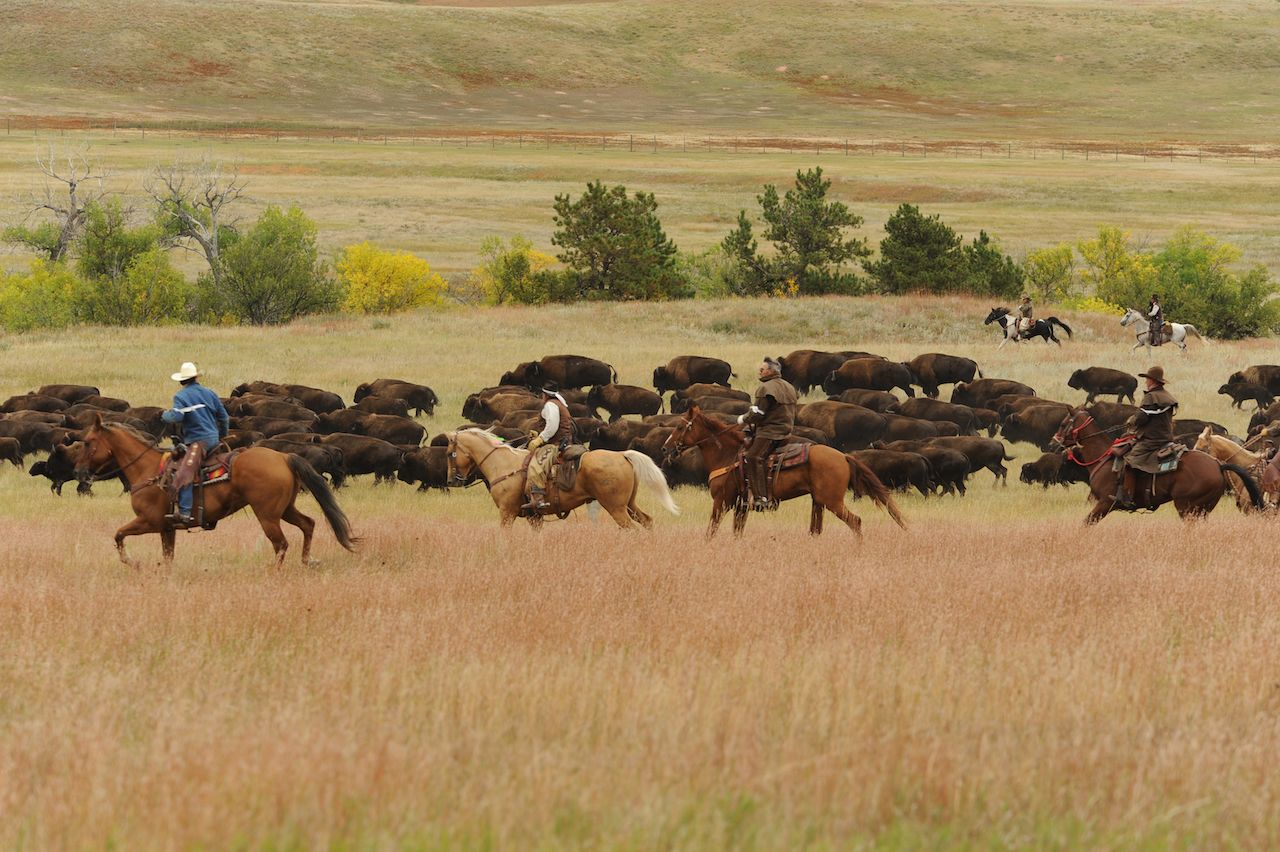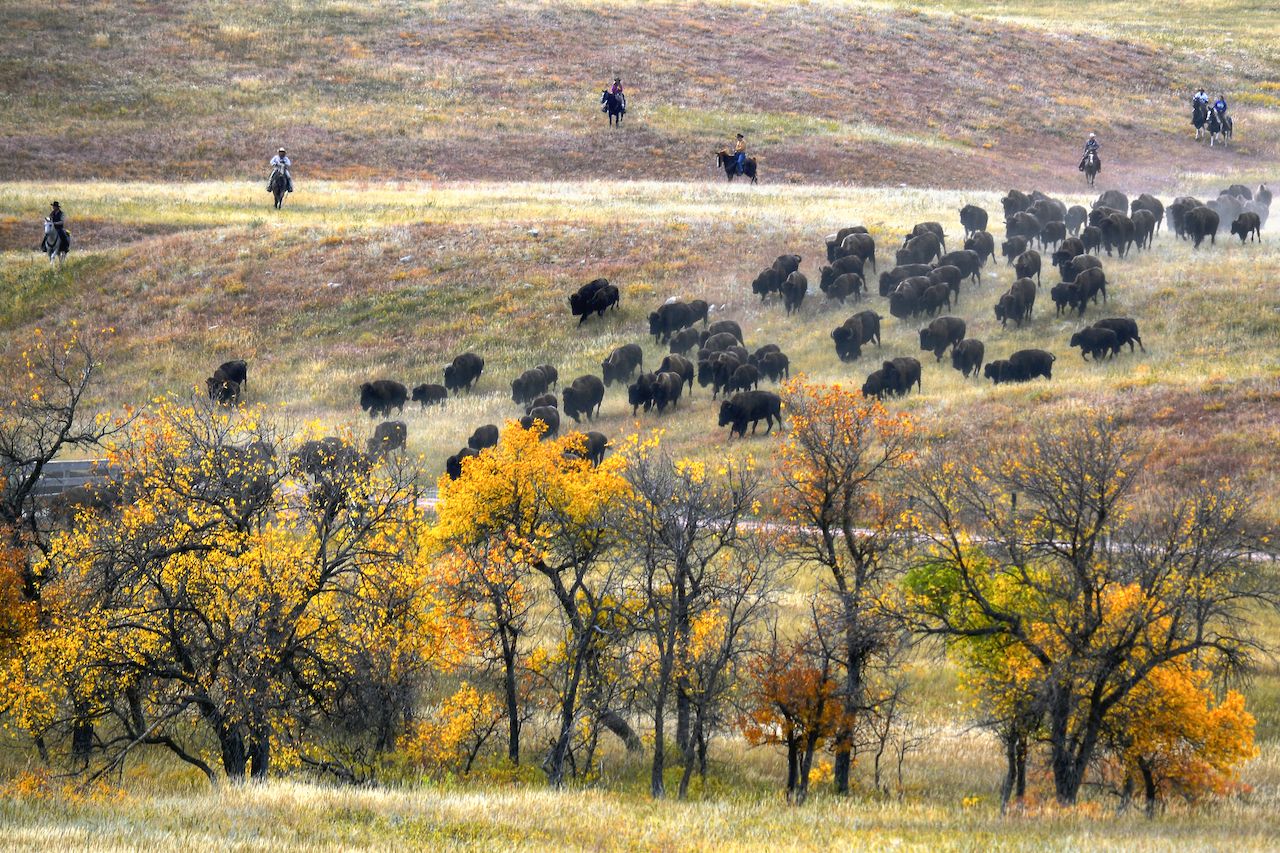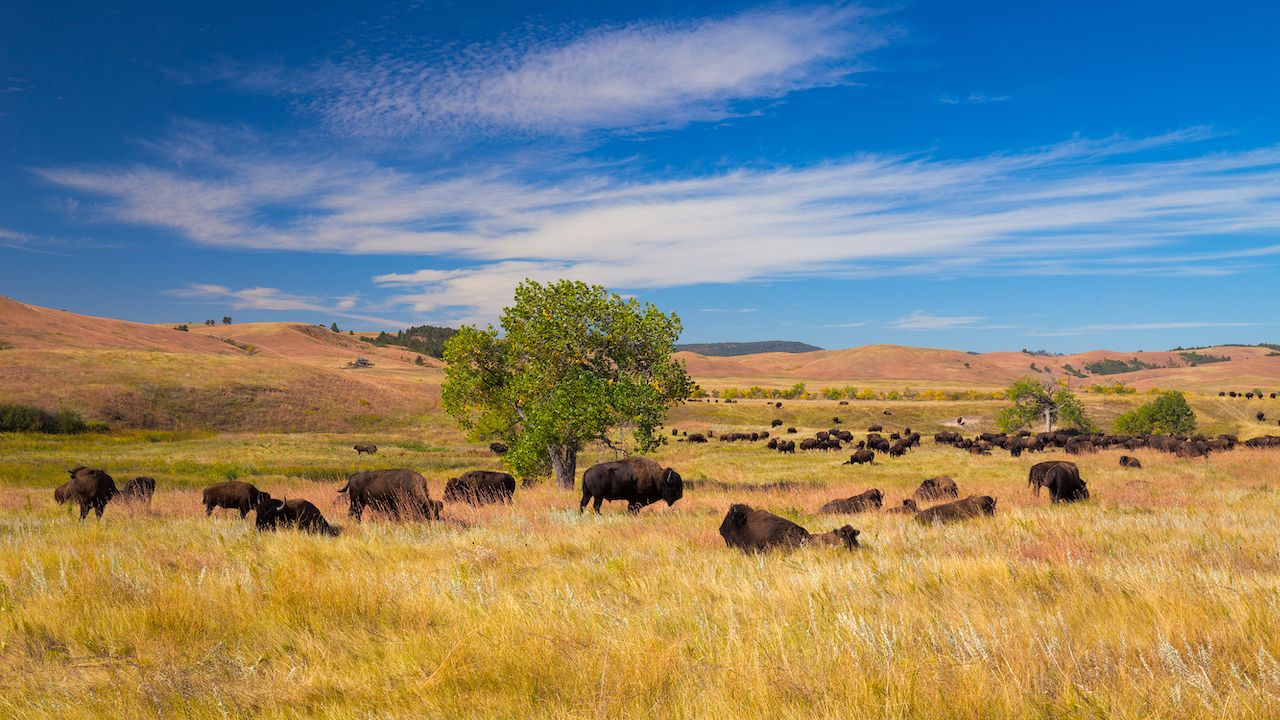“This one’s gonna hurt!” the driver warned us as we braced ourselves for some particularly gnarly terrain while riding in the bed of a pick-up truck.
I white-knuckled the roll bar with one hand and my camera with the other as I assumed a squat position to avoid being ejected into the open fields of Custer State Park in South Dakota. It was the 54th annual Buffalo Roundup, and I was in the midst of it.
As it turns out, the buffalo aren’t actually buffalo — they’re bison. Bison have beards, buffalo do not. Once I overcame the shock of that fact, I dove headfirst into the Wild Wild West buzz surrounding this unique event.
What is it about seeing over a thousand bison rounded up that puts people in good spirits? Perhaps it’s the thrill, the portal into a bit of Western past, the dash of danger, or the unpredictability. I can’t pinpoint it exactly, but I was totally there, caught up in it, and in the best of spirits. I was to report from an open-air truck and had been told by the park rangers to come prepared for a hell of a ride.





